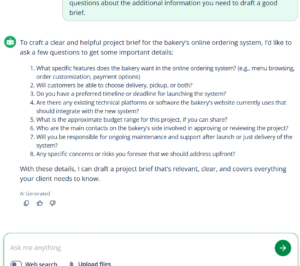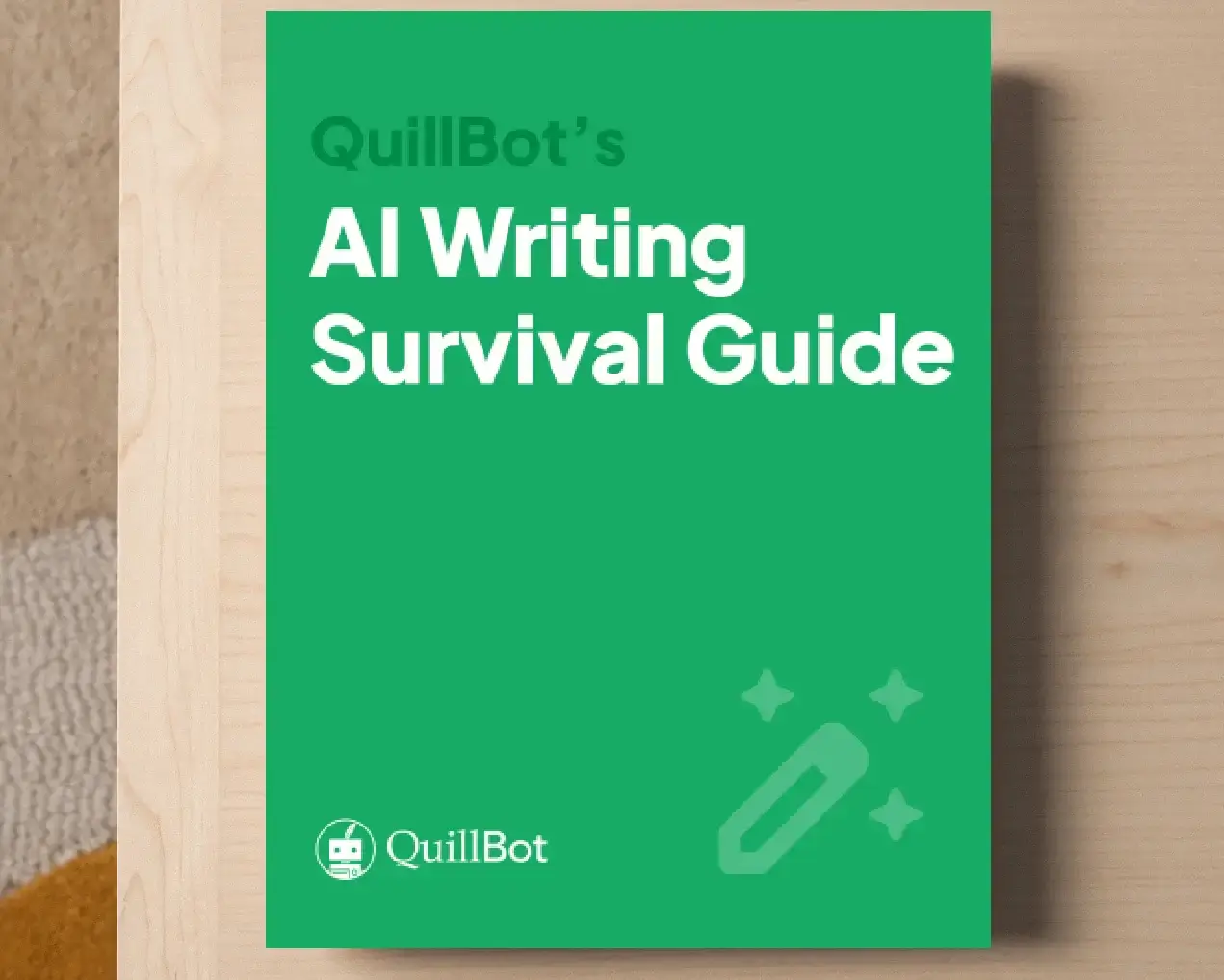How to Use an AI Project Brief Generator
A project brief is a document created before the project begins (but after the project proposal) that provides an overview of the project, developed in collaboration with the external or internal client and other key stakeholders. Its purpose is to clearly outline the nature, objectives, and timeline of the project so that everyone involved begins with a common understanding of what needs to be done.
An AI project brief generator, such as QuillBot’s project brief generator, can help you produce clearly written, well-formulated text for your brief that’s tailored to your specific audience.
How to write a project brief
Writing a project brief is about providing a comprehensive overview without going into too much detail. You want to include enough information to guide the project, but not so much that it becomes a full project plan.
1. Define your audience
Before you start drafting, identify who you’re writing the brief for. If it’s for an internal audience, you can use specialized terminology, acronyms, and shorthand your team already understands. If it’s also going to be shared with external clients or stakeholders, avoid jargon and briefly explain any concepts non-experts may not know. In some cases, it may be worth producing different versions—for example, an internal brief for the project team and a client-facing summary written in plain language that highlights how their needs will be met.
2. Create a structure
Decide how you want to organize your project brief. If your organization provides a standard template, use that as your starting point. If not, here are some common section headings that will be relevant to most projects:
- Background
- Project overview
- Objectives and goals
- Success criteria
- Scope
- Deliverables
- Timeline and milestones
- Key stakeholders
- Resources and budget
- Risks
- Constraints
3. Keep it brief
As the name suggests, a project brief should be concise—it isn’t meant to function as a detailed project plan or scope of work. Some briefs may end up longer than others, but they should still focus on the big picture. A useful strategy is to review your organization’s project plan template (if one exists) before you begin so you’re clear on which details belong in the plan but not in the brief.
Using an AI project brief generator
When writing your initial prompt for an AI project brief generator, provide the chatbot with a short description of the project along with any section headings you’d like it to use (e.g., the headings from your organization’s project brief template or ones you’ve already produced in a separate chat). End your prompt by asking the chatbot to identify any missing details it needs to complete the brief.
Don’t include sensitive commercial or personal information in the chat. Tell the AI to insert placeholders that you can fill in later when editing the draft in your word processor.
- Project overview
- Objectives and goals
- Success criteria
- Scope
- Deliverables
- Timeline and milestones
- Key stakeholders
- Resources and budget
- Risks and constraints
Some of these headings might not be relevant to this project.
Write in plain language that the non-technical client will understand because they will read it. Do not include any sensitive information—leave placeholders like [Client Name], [Budget Amount], or [Delivery Date] where details should be filled in later.
Before you start, ask me questions about the additional information you need to draft a good brief.
Frequently asked questions about AI project brief generators
- What are the elements of a project brief?
-
The elements of a project brief are typically a concise description of the project and sections with headings such as objectives, stakeholders, success criteria, scope, deliverables, timeline, budget, risks, and constraints.
QuillBot’s free AI project brief generator is a great tool for efficiently drafting clear, well-structured project briefs.
- What should I include in a prompt for a project brief generator?
-
Your prompt for a project brief generator, such as QuillBot’s AI project brief generator, needs to include basic details of the project. You can finish the prompt with a request that the chatbot ask you for any missing information it requires.
If you’re working with a project brief template, then paste in the headings of the various sections into the prompt, or upload it into the chat.
Don’t include any sensitive data in the chat or the documents you upload.
Cite this Quillbot article
We encourage the use of reliable sources in all types of writing. You can copy and paste the citation or click the "Cite this article" button to automatically add it to our free Citation Generator.
QuillBot. (2025, August 29). How to Use an AI Project Brief Generator. Quillbot. Retrieved December 2, 2025, from https://quillbot.com/blog/ai-writing-tools/how-to-use-an-ai-project-brief-generator/


